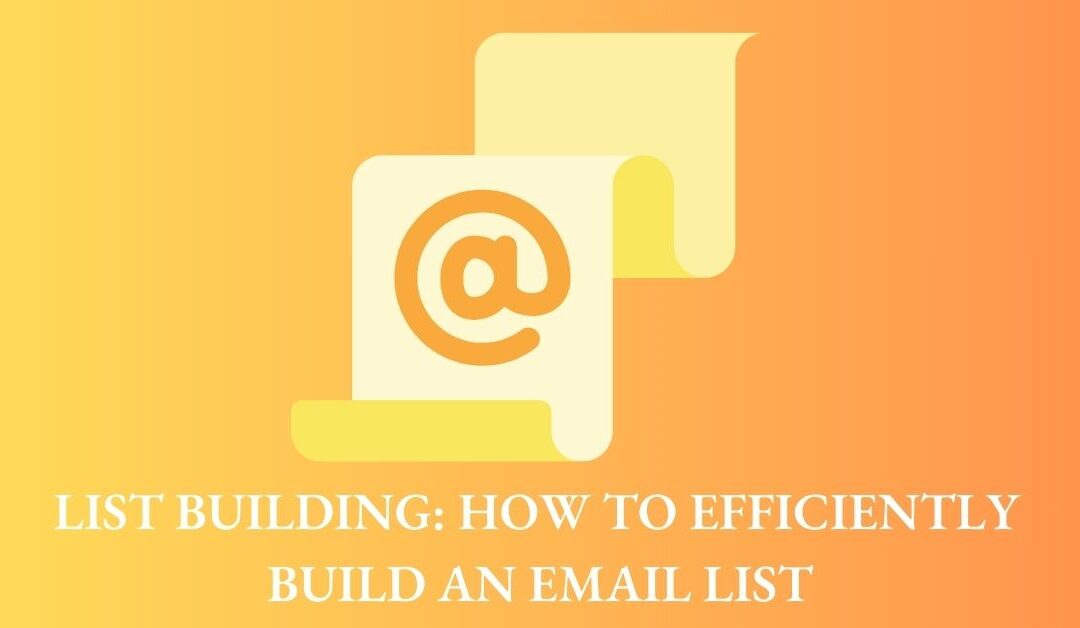High-quality, relevant content is crucial for the success of a marketing strategy. It meets the needs of its audience, increases traffic to your site, gets you backlinks, and turns visitors into customers. However, if there are content gaps, you are missing out on many audiences. Therefore, finding and fixing content gaps for an effective marketing strategy is essential.
What is Content Gap Analysis?
Content gap analysis is the practice of analyzing content to find content gaps. It allows you to discover missed opportunities that can get you backlinks, traffic, and conversions. It aims to improve your content and help create better content in the future.
What are Content Gaps?
A content gap is a gap between what the target audience wants and what you provide in the content. The gap could be in the existing content, which you can fix by repurposing. Or it can be the topics or keywords that you have missed.
Types of Content Gaps
Following are the five types of content gaps you should look for:
1. Customer Journey Experience Gap
Creating content according to the customers’ needs is critical for an optimal customer journey experience. Different segments of customers have different needs, and you should create content to cater to all of them. In addition, you must provide your customers with the right content at the right time through the right platform. For example, customer needs differ from the post-sale to the pre-sale stage.
It is a customer journey experience gap if the content:
- Is delivered when the customers are least likely to see it.
- Focuses on business needs rather than customer needs.
- Does not cover the needs of customers in different stages of the customer buying journey. For example, customer needs are different in the post-sale stage than in the pre-sale stage.
- Does not align with customers’ feedback.
- Is not created with the customer’s future intentions in mind.
Additionally, if the same content is created for different segments of users, it is also a content gap.
2. Topic Gap
The topic gap is the most common type of content gap. If your content’s topics differ from your audience’s needs, you will not drive any traffic, sales, or leads. Your content marketing strategy has a topic gap if:
- You are covering only some topics visitors are interested in reading.
- Some topics are discussed more than others. For example, if a digital marketing site has 90% of its content covering SEO while only 10% of the content covers content marketing, there is a gap.
- Topics are not created for audiences with different knowledge levels. However, your audience may be at different knowledge levels, and your content should cater to all of them.
3. Keyword Gap
Unfortunately, not all keywords perform equally on search engine result pages, making keyword research an essential component of content marketing. Choosing the right keywords can significantly influence your content marketing strategy. No matter how well you write a post, it will not generate traffic if it fails to rank higher in search results.
Following are the top keyword gaps that you should look for and fix them immediately:
- Highly competitive keywords.
- Keywords that have no search volume. Even if your content ranks on the first page of Google, it can only be beneficial if people search for that keyword.
- Keywords that do not appropriately reflect your intentions. Remember, an appropriate keyword attracts more visitors and keeps them engaged.
4. Content Type Gap
Certain types of content attract the most backlinks and generate more traffic. For example, how-to posts, opinion posts, original research, ultimate guides, and list posts are among the most popular types of content. If you are not creating multiple types of content, you are certainly not catering to the needs of many readers.
5. Content Form Gap
A good content marketing strategy aims at creating different content formats, including text, images, videos, and infographics. If you make only one form of content, i.e., text, you miss out on a large audience. Some users prefer video tutorials over written guides, while others may find infographics easier to understand and time-saving. Therefore, using only some forms of content is a gap you must fix immediately.
6. Information or Data Gap
If you discover any of the below in the content, it is an information or data gap.
- It is not up-to-date.
- It does not have examples.
- Data and statistics are obsolete.
- Critical information is missing.
- The length of the content is too short.
To cover this gap, include examples, data, and statistics in your content and ensure your content is always up-to-date.
Why is Content Gap Analysis Important?
Content gap analysis is of great significance to all businesses and provides the following benefits:
Improved SEO: Using the right keywords and topics can help improve your Google ranking and get you the most backlinks. Your site’s overall structure will also improve by fixing the content gaps.
Increased Traffic: One aim of content gap analysis is to find missed opportunities. It can be keywords that your competitors are ranking for, or it can be a topic that you have missed. Additional keywords and topics will bring additional traffic.
Optimal Customer Experience: Content gap analysis helps improve page views and reduces bounce rates. By fixing gaps in your content, you can make your visitors stick around for a longer time.
Build Relationships: You cater to all audiences’ needs by fixing content gaps. If you meet audiences’ needs, they will return for more content. Ultimately, a silent relationship will build between you and your audience.
How to Find Content Gaps and Fix Them Immediately
Finding and fixing content gaps are critical for an optimal content marketing strategy. The following are the most effective ways you can use to find content gaps:
1. Use the Content Gap Analysis Tool
Using a good content gap analysis tool is essential for content marketers. SEMrush is a popular tool with extensive features for content gap analysis. Serpstat or SpyFu are alternate tools for those who are low on budget. Content gap analysis helps you determine if:
- You have missed an opportunity. If any of your competitor’s content is outdated or returns a 404 error, you can create content to replace it.
- You have missed keywords or topics your competitors rank for in search engine result pages.
- You are using keywords that are highly competitive or have minimal search volume.
- You need to create the type of content your competitors make and get extensive backlinks.
Fix
- Identify the content in your niche that is outdated or return a 404 error and create your own content to replace it. You can then contact the webmaster of sites linking to obsolete content or broken links, requesting them to link to your content. If you have trouble finding the email addresses of web admins, you can use tools like Hunter.
- Create new content on topics your competitors rank for, but make the content different.
- Replace competitive keywords with long-tail keywords. I suggest using keyword research tools like KWFinder and LongTailPro to find optimal long-tail keywords.
- Update existing content to include keywords that your competitors are using.
2. Analyze Google Search Results
Google search results can be beneficial in finding content gaps. It is because content marketers make content intending to rank on the first page of Google. Therefore, what Google already ranks on the first page can help determine what your content lacks.
For a specific keyword, you can analyze the contents of the top 10 Google search results to figure out gaps in your content. Following are the most common gaps you will come across:
- The length of your content is short. Google prefers informative and valuable content, as it aims to provide its users with helpful content. Therefore, long-form content tends to rank higher on search engine result pages.
- Your content is not fresh. However, fresh content may affect Google’s ranking, so it will likely rank higher than outdated content.
- The keyword is highly competitive. Keywords play a critical role in how well you rank on search engine result pages. If the domain authority of sites ranking on the first page is very high, it would be tough to rank for that keyword. Checking the domain authority of any website can help you figure out if it is the keyword that is a hindrance to your performance.
Fix
- Although it is hard to determine how many words make an ideal post, content with over 1500 words performs better. Content optimization tools such as Surfer can significantly help in this regard. Surfer provides valuable suggestions on content length based on top-performing pages.
- Regularly update your older posts by including the latest information, trends, data, and statistics.
- Use long-tail keywords.
3. Analyze Content on Competitor Websites Manually
Although content gap analysis tools help quickly analyze competitor websites, such tools can be expensive for many content marketers.
In such cases, they can perform a manual audit of competitor websites. However, a manual audit can be time-consuming and may require a lot of effort. Therefore, I suggest auditing only 3-4 competitor websites.
By analyzing content on competitor websites, you can find the following content gaps:
- Topics you have missed.
- Content types you have missed.
Fix
- Analyze the content on competitor websites and list topics you have missed. Then, create content on the same or similar topics but differently.
- Create new content using content types most popular among competitors, such as list-posts, why-posts, etc.
- Wherever possible, change the content type of existing content.
4. Audit Your Website’s Content
Auditing your site’s content can help you find gaps within your existing content. You must start by identifying posts that are not performing well. Self-audit aims to find gaps in existing content that have been there for a long time but have yet to gain customers’ attention. Following are the content gaps you should look for:
- Content is outdated or has obsolete information.
- There is only one form of content, i.e., text.
- The introduction and conclusion are missing in the content or are not appropriate.
Fix
- Update all outdated content and include the latest information.
- Include images and infographics in your content. You can use tools like Canva and Visme to create professional-looking images and infographics.
- Create video content, such as tutorials and guides.
- Optimize the existing content to include any missing information. Content optimization can save you a lot of time and effort. Surfer is a great tool you can use to get valuable suggestions on how you can improve your content.
5. Engage in Community Discussions
Communities engage in discussions through various platforms, such as blog comments, social media, and discussion forums. Becoming a part of these discussions or monitoring them can help you discover content gaps. For example, you can find your niche’s most talked-about topics or learn about the reader’s expectations and needs.
Fix
- Create content on topics that are popular in your niche. BuzzSumo is a popular tool you can use to find trending topics.
- Revise existing content to include information that answers all queries related to the topic.
6. Audit Customer’s Buying Journey
Many websites only provide content for some stages of a customer’s journey. As a result, many of their visitors do not convert into customers as they fail to find relevant content.
For example, for selling a product, you must provide content comparing your product with competitor products for those considering multiple options.
A customer’s buying journey can be broadly divided into the following four stages:
Awareness Stage:
In the awareness stage, customers become aware they have a problem that needs to be solved. For example, for selling beauty products such as sunscreen, creating content on topics like ‘how to get rid of freckles’, ‘5 causes of skin thinning’, and ‘5 ways to reverse the signs of aging’, caters to customers in the awareness stage. Through the content in the awareness stage, customers would know there is something wrong with their skin routine and that good sunscreen is what they need.
Consideration Stage:
In this stage, the customer compares products or services to make an informed purchase decision.
Decision:
In this stage, the customer looks for the last details about a product they want to purchase, like payment plans, payment methods, subscription details, FAQs, etc.
Retention:
Retention is the final stage of a customer’s journey experience, where customers are looking for post-purchase content, such as:
- Guides or tutorials on how to use a product or service.
- Updates about new or updated features.
- Promotions and offers.
The content created for this stage determines whether or not the customer will buy again from you.
Auditing the four stages of a customer journey can help you find what your customer expects at each stage and whether your content meets their expectations. The following are the most common content gaps in customer journey experience:
- No content states the target audience’s problem and how your product or service can solve it.
- You still need to include reviews about your product.
- The content does not list the best products or services in your niche.
- You have not compared your product with other similar products.
- The refund or cancellation policy is not clear.
- There is no FAQ page answering customers’ queries.
- You are not sending follow-up emails.
- There is no feedback page where customers can share their experiences.
Fix
You can fix the content gaps in the customer’s buying journey using the following three steps:
Step 1: Get customer feedback at every stage of their journey to better understand their needs. Explicitly ask for customer feedback instead of waiting for them to contact you. To get customer feedback, create a feedback page, allow comments on posts, and conduct surveys to understand market sentiment better.
Step 2: Based on the feedback, create content you have previously missed for different customer’s buying journey stages.
Step 3: Use internal links to link content related to customer journey stages. Internal links make it easier to find relevant content.
7. Use your Relationships with Peers
You can brainstorm with your peers if you have good relationships. However, you can conduct surveys if you have just started and are not in touch with other professionals. Surveys can identify trends that can help you find content gaps. In both ways, you will learn about missed topics or new content ideas that may interest your audience.
Conclusion:
Finding and fixing content gaps is an effective way to optimize content. It can significantly improve your SEO performance, improving traffic and sales. On the other hand, content with gaps can negatively affect your marketing efforts.






0 Comments